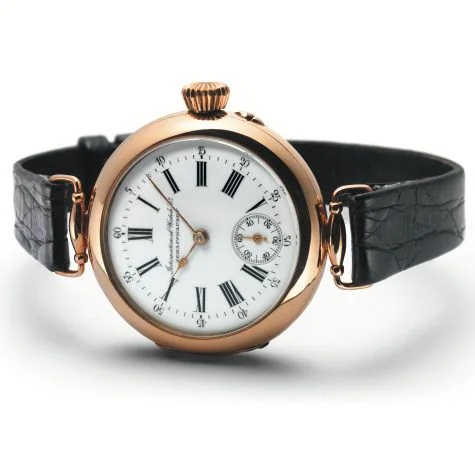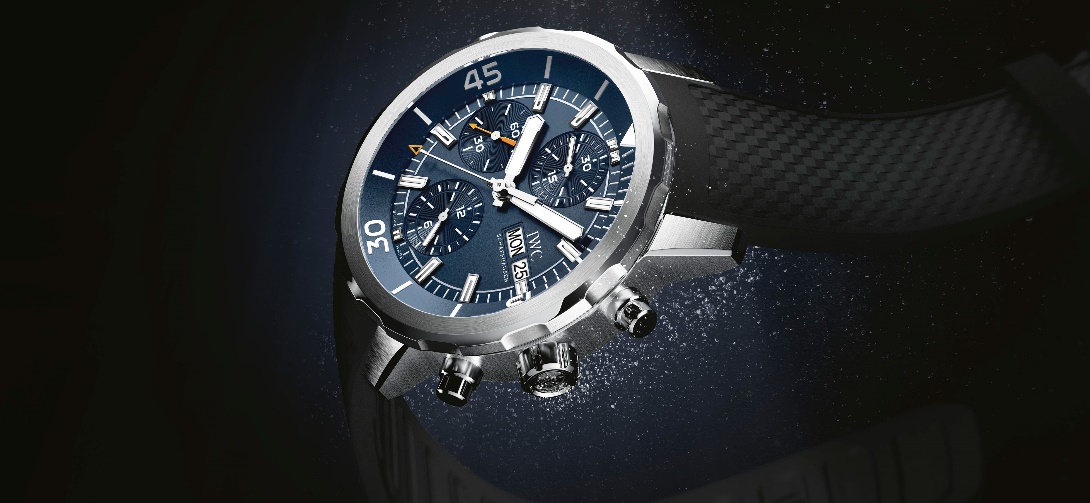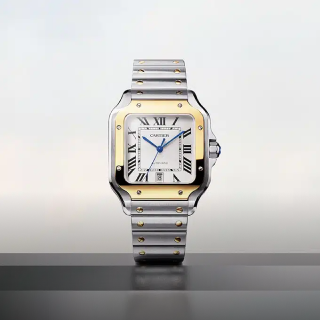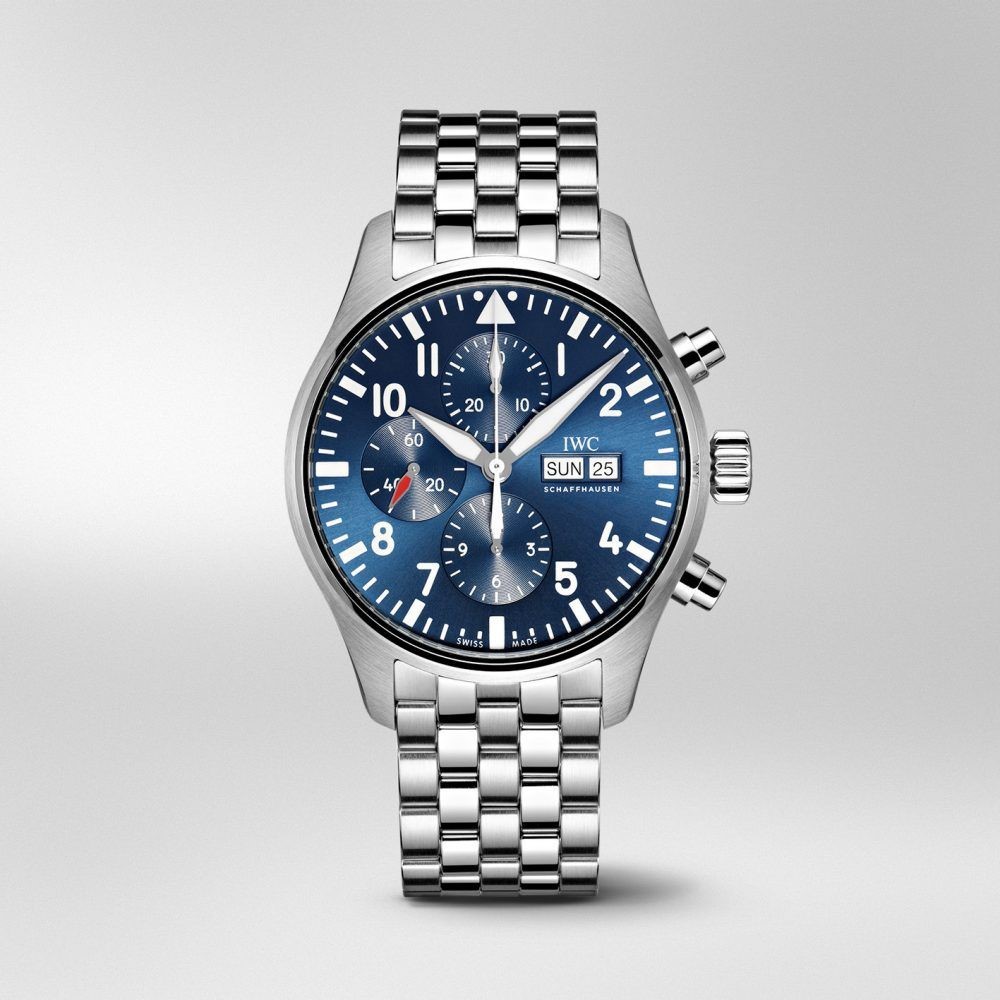Founded in 1868, IWC was initially known as the International Watch Co. The aim of founder Florentine Ariosto Jones, an American watchmaker located in Schaffhausen, was to produce high-quality pocket watches for the American market.
By 1875 the company had new headquarters on the banks of the River Rhine and employed 196 members of staff. While Jones sold the business in 1880 to Schaffhausen local Johannes Rauschenbach-Vogel, the offices remain in the exact location. The company remained in the hands of Rauschenbach-Vogel’s heirs until the 1970s. During this time the company underwent several name changes, including Uhrenfabrik von J. Rauschenbach, Uhrenfabrik von J. Rauschenbach’s Erben, Uhrenfabrik von Ernst Homberger-Rauschenbach. It wasn’t until 1978 when the International Watch Co name was reacquired, following investment from the VDO Adolf Schindling AG
The Early Era of Pocket Watch from IWC
IWC took pride in offering pocket watches with the highest possible quality movements in the early days. The innovative thinking of the brand brought about its first “digital” display model in 1885. The Pallwebber, named after its inventor, was one of the first pocket watches to use rotating discs for hours and minutes. These were shown through two windows on the face of the watch, and the seconds were shown below with a hand on a subdial. The model was popular, and records suggest that over 16,000 Pallwebber watches were sold from launch to the 1890s. Many of them featured hand-painted designs on an enamel base as the dial was free for art, only requiring the two small windows and the second dial. The Pallwebber was produced until the early 1890s, when the company returned to the standard analogue display for its pocket watches and started investing in wristwatches.

IWC’s First Wristwatches
In 1899 the company produced the first known wristwatches; a dainty ladies’ wristwatch which included the company’s 64 calibre pocket watch movement inside a case, complete with a leather strap. This calibre and the 63 calibre pocket watch movement were used to produce wristwatches until the mid-1910s, with the movements housed inside 33mm cases. Over the next 26 years, the company started to develop calibres for the wristwatch market, and in 1915 they released designs of two calibres. The 75 was created without a second hand and the 76 calibre with a small second hand. These were much smaller and allowed the wristwatch diameter to be reduced to less than 30mm. In some instances, the diameter was as small as 28mm, which was preferred for the ladies’ styles.
The Pilot and Portugieser Watches
By 1936 the company was under Ernst Jakob Homberger and developing the styles it is known for today. Under the guidance of Homberger, the first IWC Portugieser watch, a large, high-precision wristwatch suitable for marine travel use. The Portugieser was considered huge against the popular 33mm wristwatches of the time at 43mm but is thought to have paved the way for the more oversized wristwatches we see today.
Post War IWC Schaffhausen
The company reacted to the increased use of technology in everyday life following the war. With the rise of appliances that created magnetic fields, watches needed to be made with more accuracy and protect against these fields. The 89 calibre movement developed by IWC in 1946 was iconic of its time, featured a central seconds hand and offered the accuracy required; it became the stable for the Pilot’s watches. Following in 1950 was the 85 calibre, the brand’s first automatic winding mechanism, which featured a pawl-winding system and was the patented property of IWC.

The Ingenieur, Aquatimer and Da Vinci Watches Start Production
In the years that followed, IWC went through several changes. The company was passed to Hans Ernst Homberger and launched the IWC Ingenieur, the first model to take advantage of the automatic winding from the 85 calibre mechanism. This robust model featured magnetic field screening, shock protection, and watertight ability. In the 1960s, the focus of a water-resistant watch was built on further with IWC Aquatimer watches, the first Aquatimer had a 20 bar resistance, or 200 metres, and a rotatable bezel under the glass to prevent it from being moved during dives. This decade also saw IWC Da Vinci watches launch, the first “electronic” model from the brand featuring a Swiss-made quartz movement. It was thought that this model could measure time ten times more accurately than other chronometer movements at the time.
New Ownership, Investment and Technology
The changes in the 50s and 60s were nothing compared to the huge restructuring that came in the 1970s. Amid the Quartz crisis, changes were needed and focused heavily on creating watching art with traditional watchmaking techniques. With new ownership and investment from VDO Adolf Schindling AG, the company produced the world’s first titanium case in collaboration with F.A Porsche. In addition, they made movements toward scratch-resistant and virtually unbreakable ceramics for their cases materials and developed a chronograph featuring a perpetual calendar and four-digital year display. With a massive leap in technology and design, the company celebrated its 125th anniversary at the end of the 1990s with the most “complicated” mechanical wristwatch of its time; the II Destriero Scafusia. This limited edition piece features multiple complications, including a tourbillon, split-seconds, minute repeater and perpetual calendar.

Current Day IWC
In 2020 IWC Schaffhausen became part of Richemont, a Swiss Luxury goods holding company and continues to invest in its leading watch families; the Pilots, Portugieser, Da Vinci, Aquatimer, Portofino and Ingenieur. With features such as 7-day movement, automatic winding, power reserve display, date displays and moon phases on perpetual calendars, the watches indicate the innovation built on throughout the company’s history. The latest models released fall into the IWC Pilot Top Gun range, including the Double Chronograph Top Gun Ceratanium model with functional, robust casing, ceramic and titanium alloy and integrated split-seconds functionality.
Discover the IWC Schaffhausen range at New Cavendish Jewellers
We stock a range of IWC watches in our London showroom, including their Pilots, Portugeiser, Da Vinci and Aquatimer models. Our expert team have knowledge of which models will work best for your style and requirements and can help you when looking for IWC Watches on finance. Discover the range online or in our Marylebone High Street Store today; contact us to book an appointment.



